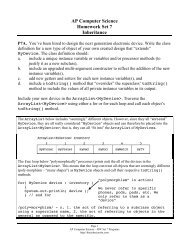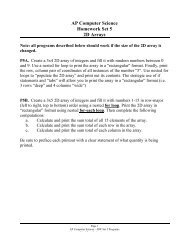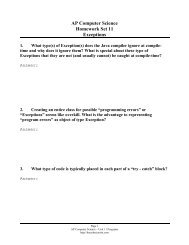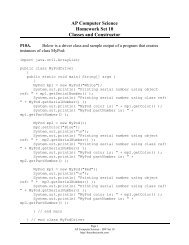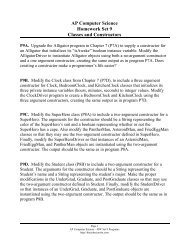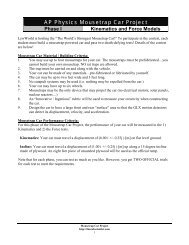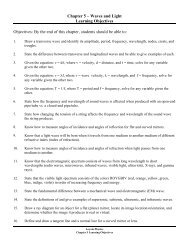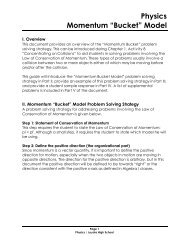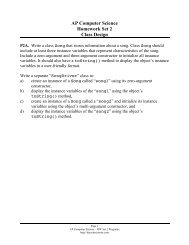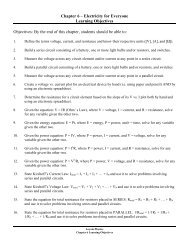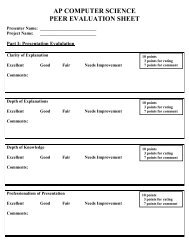Physics Energy “Bucket” Model - thecubscientist.com
Physics Energy “Bucket” Model - thecubscientist.com
Physics Energy “Bucket” Model - thecubscientist.com
Create successful ePaper yourself
Turn your PDF publications into a flip-book with our unique Google optimized e-Paper software.
7. Two mice, Pinky and Brain, push against a stationary wall, Pinky stops after<br />
10 minutes, while Brain is able to push for 5 minutes longer. Compare the<br />
work they do.<br />
a. Pinky does 50% more work than Brain<br />
b. Brain does 50% more work than Pinky<br />
c. Pinky does 75% more work than Brain<br />
d. Neither of them do any work<br />
8. You lift a 10 N physics book up in the air a distance of 1m, at a constant<br />
velocity of 0.5 m/s. The work done by gravity is:<br />
a. +10 J<br />
b. -10 J<br />
c. +5 J<br />
d. -5 J<br />
9. The area under a curve, on a Force-position (F vs. x graph) represents:<br />
a. work<br />
b. power<br />
c. kinetic energy<br />
d. efficiency<br />
10. Which of the following curves illustrates Hooke's Law?<br />
11. A 10 kg mass, hung onto a spring, causes the spring to stretch 2 cm. The<br />
spring constant is:<br />
a. 49 N/cm<br />
b. 5 N/cm<br />
c. 0.2 N/cm<br />
d. 0.02 N/cm<br />
Page 14<br />
<strong>Physics</strong> | Loyola High School




